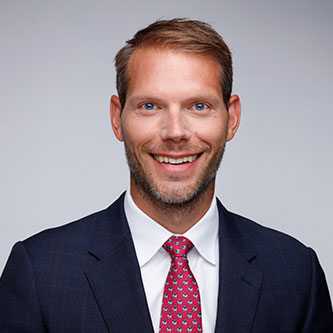Energy transition enters a new stage
In 2025, two major developments are shaping the drive to net zero: a boost in energy demand driven by AI growth and shifts in capital flows due to higher interest rates.
"Both of these mean we’re entering a new phase of the energy transition,” says Ralph Ibendahl, Global Head of Energy Transition Banking.
New renewable capacity and firm power will be needed to meet the demand for extra data centers to provide the computational power for AI. Geothermal power and small modular nuclear (SMRs) reactors are among the technologies being touted.
To keep pace, the world will also need more investment in grid capacity, Ibendahl points out, as well as new software to support the transition. There are specific opportunities in some regions too, such as the U.K.’s embrace of carbon capture and storage.
“The U.K. government has committed $22 billion to build up that industry. We’ve seen the first FID decision on a project that will require equity raises, and we’ll see more projects during 2025,” Ibendahl says.
“In the E.U., there’s significant support for blending mandates in aviation, which means the airlines need to blend sustainable aviation fuel (SAF) alongside traditional jet fuel. This will spur on projects in that space.”
Politics won’t derail the transition
The transition continues despite changes in the political weather, Ibendahl points out. In particular, investors are closely monitoring decisions by the new U.S. administration that impact the energy sector.
As anticipated, the U.S. has now withdrawn from the Paris Climate Accord. There have also been executive orders are underway to reassess permitting for both onshore and offshore wind projects, and the ambitious target to raise electric vehicle sales to 50% by 2030 has been abandoned.
However, Ibendahl notes that the Inflation Reduction Act (IRA) still provides support for renewables progress. He says the transition will continue despite further political changes in the U.S. and elsewhere in 2025, with elections looming in Germany and Canada, and uncertainty in France.
Trevor Gardner, Head of Global Banking Coverage at RBC Capital Markets, agrees: “The energy transition doesn’t always move in a linear path. External events come into play, but the overall direction is clear.”
“The energy transition doesn’t always move in a linear path, but the overall direction is clear.”
Trevor Gardner, Head of Global Banking Coverage
Capital flows hit new highs – and more is needed
New data indicates that, for the first time in 2024, capital invested in the energy transition exceeded $2 trillion, providing strong evidence of growth. Transport, renewables and grid projects were the top three types of project, with China the largest market, followed by the U.S. and then Europe.
“We see appetite from venture capital, growth equity, infrastructure funds, sovereign wealth funds – all looking to deploy into the sector,” Ibendahl says. “Equally, our strategic clients are interested in this theme, both as a growth play and as a decarbonization play.”
On the other side, companies with innovative new energy technologies are always in need of growth capital, which is harder to come by than in the ‘euphoria’ of the market five years ago.
The best investor could be in any global market, says Ibendahl, so support from the right advisor is key: “Spending more time thinking about the right fit for your company pays dividends later in terms of lowering the execution risk.”
This is especially true at the so-called ‘missing middle’ or ‘valley of death’ stage – where businesses have secured their anchor investors but need to scale up quickly, potentially requiring hundreds of millions.
“We are seeing more of that capital being raised,” says Ibendahl. “If you can get through that missing middle and have the right investors on board, you’re well placed to be able to raise the debt and the equity – and the good news is both of those markets are wide open.”
“We see appetite from venture capital, growth equity, infrastructure funds, sovereign wealth funds – all looking to deploy into the sector.”
Ralph Ibendahl, Global Head of Energy Transition Banking

